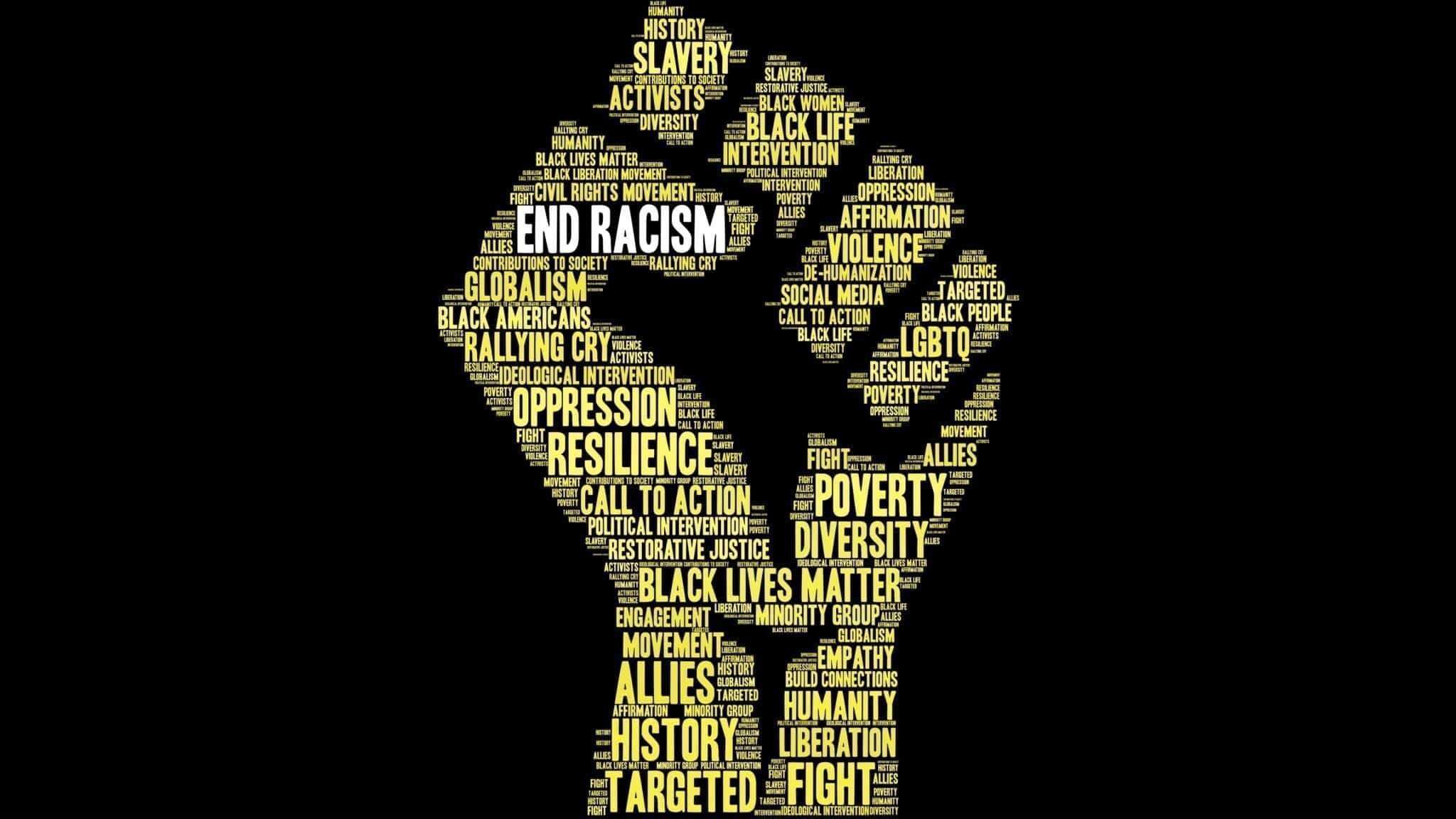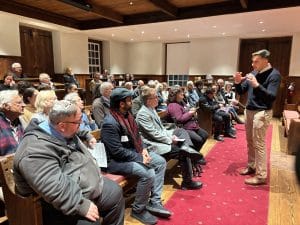“I think America is very politically divided right now. No matter what topic you bring up you kind of reduce it down to politics. Which eventually gets reduced down to race. I think we could all do with taking a step back from race once in a while and just talking as human beings.” – Ronnie Chieng
Ronnie is half right.
We should talk as human beings, as no one is a representative for their entire racial group, least of all me. Part of the aim of discussing race, racism, and racial justice stems from our shared desire to simply be seen as human. But by no means is it advisable or even safe to consider taking a step back from race while we do it. I propose talking about race, as human beings, and also as citizens, residents, and voters of Bucks County. Because these discussions are so important and so needed. Especially here. Especially now.
If you don’t believe me, let’s try a little mental exercise. When one combines the words “racist” and “region,” there’s often a clear mental image that immediately and almost automatically springs to mind. Try it out. Think to yourself, “racist region.” Being totally honest, I want to know whether you pictured somewhere in the deep south? Perhaps the Bible Belt? Or instead, did you picture Pennsylvania when you combined those two words? Here in the liberal northeast, we “coastal elites” have a reputation of being post-racial, or at least racially tolerant – not like those other places, right? For most of us, racism is seen as something that happens elsewhere, perpetrated by others far from where we are.
To clear up this misconception, let’s take a look at some data put together by Bloomberg News for its 2015 article “Mapping Where Americans Google the N-Word.” The map below illustrates Google searches including the word ‘N****r’ by standard deviations from the mean. Take a look at some of the states you may have pictured – Alabama, Mississippi, Georgia, South Carolina, Louisiana. Now cast your eyes on Pennsylvania. If Bucks County could be seen on this map, it would be entirely awash in red. The Bloomberg article also outlines how this directly correlates to mortality rates for blacks in these regions specifically. This data is from 2004-2007, but that only serves to underscore my point, as we know that where racial animosity is concerned, things have gotten much worse in the interim.
So we need to abandon the idea that racial injustice doesn’t occur here, or if it does it doesn’t happen like it does in those “really racist” locales. It’s right outside your door. It’s in your school when Critical Race Theory is being mistakenly seen as a threat to white people. It’s in the way that many in our community who cry for ‘freedom’ want to limit what students can and should say, read, or think. It’s in the way that some school districts see Diversity, Equity, and Inclusion efforts as something that holds no value at all. It’s in our policies as efforts to aggressively gerrymander voting rights away from people of color have gained a lot of traction, yet minimal media coverage in recent years. It could even be in you (yes, you) if you choose the easy path of comfort and apathy over attention and action. Perhaps, then we as a community need to redefine our conception of where racism appears. Perhaps we might need to even redefine our collective conception of how it appears.
Once we educate ourselves and make these redefinitions, it should come as no surprise that a significant percentage of the people who helped incite violence at our capital two years ago were from Bucks County. When you take into account the map data above with the fact that our former president has strong personal ties to the area and relies heavily on white nationalists for support, it makes perfect sense that this region in particular would be an ideal locale to recruit people towards this nefarious aim. If you still don’t think that race is a factor here, you can look at the difference between the guard detail at the capitol that day and the one used to intimidate peaceful protesters during the BLM marches of 2020.
Once we educate ourselves and make these redefinitions, it should come as no surprise that a significant amount of money has been directed to propping up candidates and officials who stand opposed to any efforts at racial reconciliation, racial equity, or even bringing up race in the classroom.
Once we educate ourselves and make these redefinitions, it should and will become evident why we cannot and should not take a step back from race once in a while. Mind you I am not saying that we can never rest. I took a break from this column, from this work, for my own health. But that break was temporary and is now over. Because the one thing none of us can afford to do is take a permanent step back from discussing race, because causally, or tangentially, race is a part of each and every issue we care to discuss – especially in Bucks County.
But first we must educate. So we’ll be announcing a Black History Month reading challenge shortly, and we’d love for you (yes, you) to participate in it. You’ll need an active library card and the Hoopla app (for iPhone or Android), so make sure those are both ready. We’ll announce the book in one week.
Can we talk about race as human beings? I am hoping that we can.
Stay tuned…






